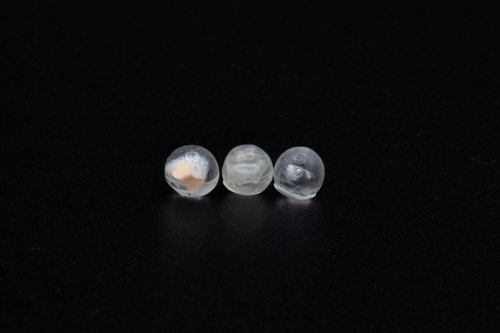Biography :
Adriana Knouf (she/her/hers, sie/hir/hirs) works as a xenologist, as an artist-scientist-writer-designer-engineer. She engages with topics such as space art, satellites, radio transmission, non-human encounters, drone flight, queer and trans futurities, machine learning, the voice, and papermaking. She is the Founding Facilitator of the tranxxeno lab (https://tranxxenolab.net), a nomadic artistic research laboratory that promotes entanglements amongst entities trans and xeno. Adriana is also an Assistant Professor of Art + Design at Northeastern University, Boston, MA, USA.
Adriana publishes widely, including a book, _How Noise Matters to Finance_ (University of Minnesota Press, 2016); journal articles about radio art and xenological temporalities; book chapters about biohacking and the intersection of handpapermaking and electronics; and conference papers about surveillance, xenology, and human-computer interaction. Adriana's research has been supported by residencies such as Field_Notes and Wave Farm. She exhibits nationally and internationally and regularly presents at conferences and festivals around the world. For more information see http://zeitkunst.org.
Tranxxeno Entanglements: On the Audacity of Imagining Transgender People in Space
Abstract :
As far as we know there have been no transgender people in space. Yet transgender people, as well as others who engage in extensive body modification necessary for survival such as disabled folx, might be the most suited for space travel given our somatic experiences of deep xenological transformations. Such transformations will likely be required for survival and thriving both in extraterrestrial as well as future terrestrial environments. I am exploring these issues through projects in my newly launched tranxxeno lab, a nomadic artistic research laboratory that investigates the productive entanglements between entities trans and xeno. The first project, entitled TX-1, will launch fragments of my hormone replacement medications to the International Space Station and will mark the first-known time that elements of the transgender experience orbit the earth. TX-1 will ultimately return to the surface of the earth, hopefully intact. This is a symbolic exodus from a planet that is often inhospitable to us, yet its return is a sign of resilience, of not simply being discarded as burnable waste. The project leads us to consider the audacity of queer and transgender futures in space, questions of more-than-human enhancement that connect to the historical legacy of the cyborg, and are part of my research into xenology, or the study, analysis, and development of the strange, the alien, the other.
 "TX-1", image courtesy of the artist
"TX-1", image courtesy of the artist
|









